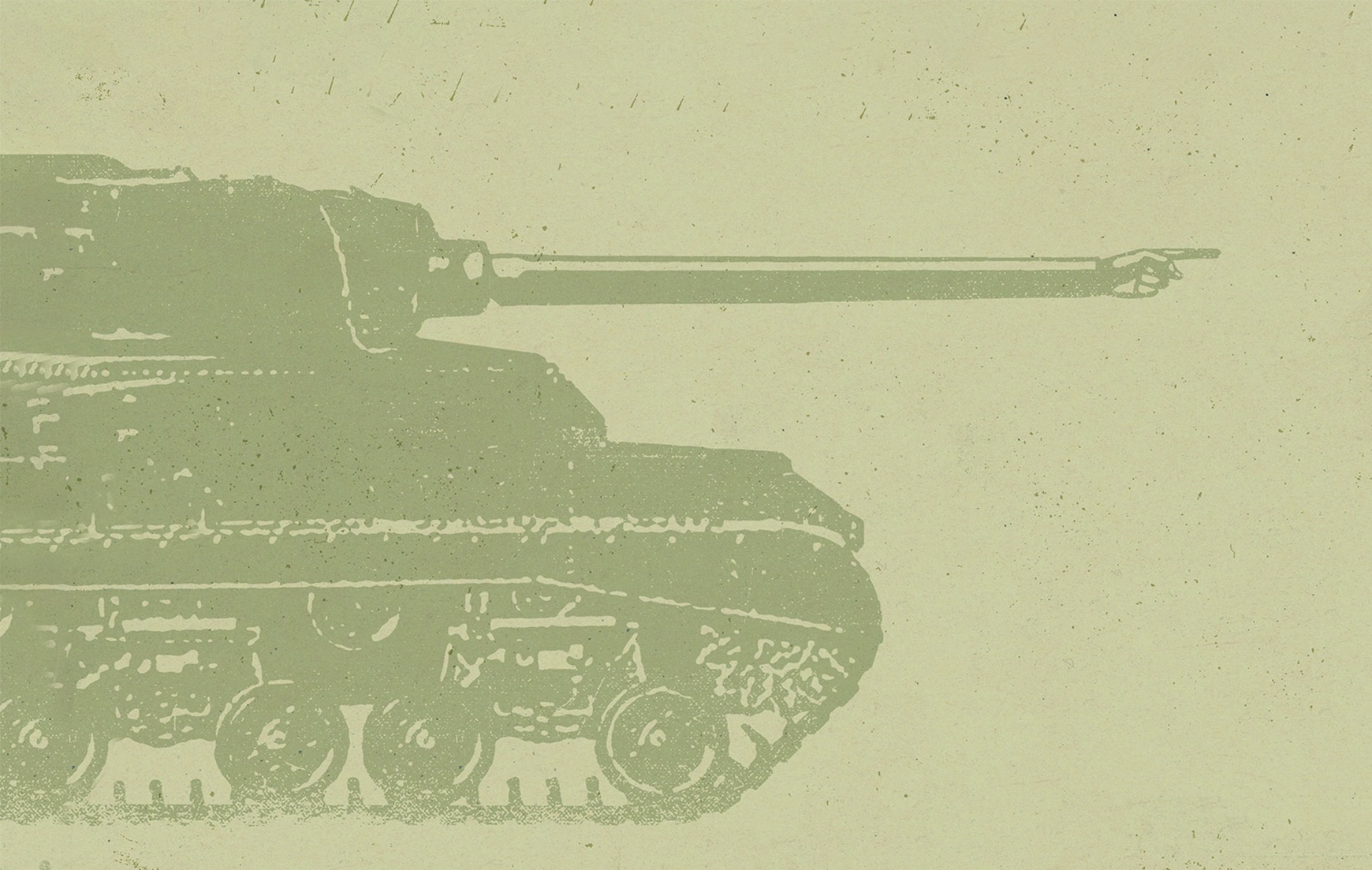Reflections on the Sherwood Rangers Yeomanry, and their tragedies and triumphs in battle.
I’ve been thinking a lot recently about the astonishing responsibility that lay on the very young shoulders of junior tank commanders during the war. Take John Semken, for example, of the Sherwood Rangers Yeomanry, a British armored regiment. On October 25, 1942, Semken, then a lieutenant and just 21, was pausing in his Sherman tank on the second morning of the Battle of El Alamein. It had been a tough couple of days, and his great friend, Lieutenant Ronnie Hill, clambered down from his own tank and jumped up behind the turret of Semken’s vehicle to have a quick chat. Suddenly, a shell whooshed in and Hill disappeared. Semken was left standing in his turret with bits of his friend’s atomized body plastered all over him.
Twenty months later, Semken was commanding the Sherwood Rangers’ A Squadron in Normandy. A British squadron of tanks was the equivalent of an American company; as such, Semken had under his command some 19 tanks and around 100 men. That was no small number. He was, though, a hardened veteran by that time, as were the other Sherwood Rangers men now in Normandy. They had begun the war as cavalry and, with their horses, had been packed off to Palestine. The horses had not lasted, however, and the Rangers retrained—first as artillery and then as an armored regiment in early 1942. By the end of the Tunisian campaign in May 1943, they had a mass of combat experience and had become a very fine outfit indeed. That was why they were earmarked for a role on D-Day on June 6, 1944.
Normandy, however, was very different from the wide-open deserts of North Africa. Their role was to support the infantry—yet many of these infantry troops were new to battle, and not much thought had been given to fighting a battle of attrition among the narrow lanes and hedgerows of Normandy’s bocage country. That meant that while the Sherwood Rangers’ previous experience was of huge value, their tactics had to be completely rethought. In fact, they had to be worked out on the fly during the fighting, and it was squadron commanders such as Semken who were best placed to do that and then pass these tactical innovations along. That did mean, though, an extra layer of burden laid on Semken and other young leaders.
Just think about this: A man like John Semken would have had his head out of the turret because otherwise the tank was effectively blind. He had to communicate with his own crew on the tank intercom, but also with the rest of the squadron—and keep a listening ear on the other squadrons, too. He had to make snap decisions—reaction time was everything—and be constantly alert: for snipers, for hidden enemy guns, for lone foes with panzerfausts. He had to read the lay of the land and make sure he was working with the infantrymen the tanks were supporting. There was so much to think about. Concentration at all times during combat was paramount. And exhausting—physically and mentally.
Semken kept going, all through Normandy and the rapid advance through France and into Belgium and Holland. All the way until November 18, 1944, when the Sherwood Rangers were supporting the U.S. 84th Infantry Division—the Railsplitters—at Geilenkirchen on the German border, in what was the 84th’s first-ever combat. That day, in thick mud, Semken’s tank hit four mines simultaneously. Miraculously, he survived and was awarded a Silver Star for his leadership. “But that was my last battle,” he told me many years later. “After that I was finished.” Suffering from combat fatigue, Semken was sent home—but by that time, the Sherwood Rangers had become one of the very best armored units in the British Army.
Semken was then just 23 years old. Times might be difficult now, but it helps, I find, to think about what those boys went through—and, more importantly, achieved—back then in their tanks. The hardships they experienced in the prime of their lives seem almost unimaginable today. We don’t know how lucky we are. ✯
This article was published in the June 2021 issue of World War II.





